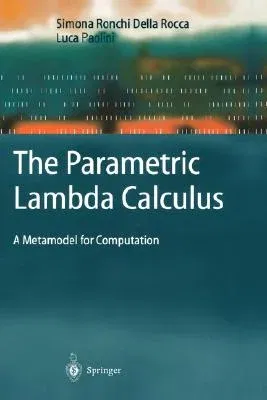Simona Ronchi Della Rocca
(Author)The Parametric Lambda Calculus: A Metamodel for Computation (2004)Hardcover - 2004, 5 July 2004

Qty
1
Turbo
Ships in 2 - 3 days
In Stock
Free Delivery
Cash on Delivery
15 Days
Free Returns
Secure Checkout

Part of Series
Texts in Theoretical Computer Science. an Eatcs
Part of Series
Texts in Theoretical Computer Science
Print Length
248 pages
Language
English
Publisher
Springer
Date Published
5 Jul 2004
ISBN-10
3540200320
ISBN-13
9783540200321
Description
Product Details
Book Edition:
2004
Book Format:
Hardcover
Country of Origin:
US
Date Published:
5 July 2004
Dimensions:
23.39 x
15.6 x
1.75 cm
ISBN-10:
3540200320
ISBN-13:
9783540200321
Language:
English
Location:
Berlin, Heidelberg
Pages:
248
Publisher:
Weight:
562.45 gm